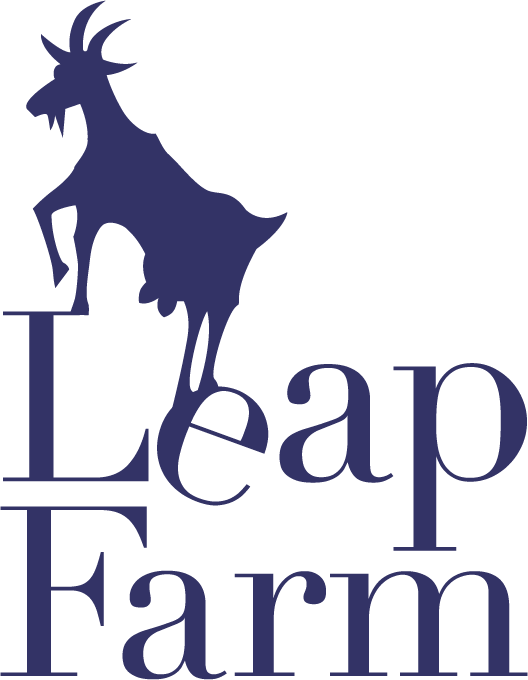About Us
Iain & Kate Field
Iain and Kate Field started Leap Farm in July 2012. Iain was lecturing and researching ecology at Macquarie University, Sydney, when he decided that it was time to put the ecological practices he taught and researched into practice. Both Iain and Kate love cheese (their relationship was founded on a wheel of brie and rugby), and thus the decision to become cheese makers was a very easy one. Returning to Tassie was another easy decision: friends, family and the local food culture dictated that there was nowhere else in Australia they'd prefer to be. And they found the perfect patch of paddock.
In order to ensure quality milk (and happy goats), the farm was purchased and populated with kids, to grow into the lovely does on the farm today. In addition, 50 cows (in calf) and a handsome bull were purchased. The farm came with rangeland goats, and with an outlet for sales at the Bream Creek Farmers Market which started in December 2012, Iain and Kate were able to start food production earlier than expected in the form of goat meat. Since late 2013, they have been producing their own beef and value-added products, sold directly to the consumer.
Leap Farm is not certified organic or biodynamic, however organic principles are utilised to improve the land and increase biodiversity, improving productivity. There are a diverse range of animals and habitats, with evidence of wombats, a platypus in one of the dams, echidnas, quolls, paddy melons, swamp rats, wedge-tail eagles, banjo frogs (or ‘pobblebonks’) and the common froglet sharing Leap Farm as their home. By protecting stands of native forest and encouraging revegetation, the biodiversity will be protected and hopefully widened.
Our attempts at improving productivity are clearly paying off; in 2014 we welcomed our first child into the world, and then our second arrived less than 2 years later in the winter of 2016.
In 2021, we became a carbon positive farm. We sequester three times as much carbon in our soil than we emit!
We calculated the carbon footprint of our farm using GHG Accounting Framework calculators developed by the University of Melbourne (greenhouse.unimelb.edu.au/Tools.htm). Our sequestration analysis was done using soil tests results from 2016 and 2021. These values have been confirmed by farming systems specialist, Assoc. Prof. Matthew Harrison, at UTas to determine the carbon footprint of our farm.
In 2019, Leap Farm emitted approximately 190 tonnes of carbon equivalents, while sequestering 610 tonnes of carbon equivalents. So, although we have a relatively small amount of land (108ha), we are able to offset the emissions of 60 average Australian houses each year (while the farm is carbon neutral). And we are really proud of that.
To remove carbon from the atmosphere and reduce our emissions we have used a number of farm management strategies including incorporating a diverse pasture system, keeping 100 % pasture cover where possible, low inputs and medium stocking density, reducing the number of non-productive stock, for the goat herd turning-off and finishing our stock earlier and in better condition through a hybrid genetic program, fencing to protect tree stands and create shelter belts, and using solar PV and solar hot water for dairying and cheesemaking.
It’s great to be part of the solution, rather than part of the problem.
You are welcome to visit Leap Farm to see for yourself how the land and animals are managed. Contact Us for more info or to arrange a time.

